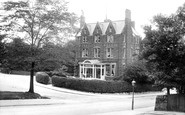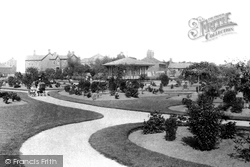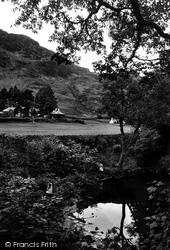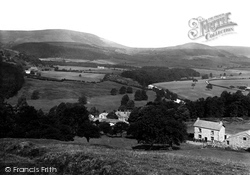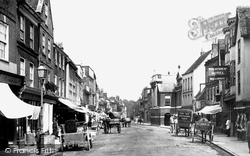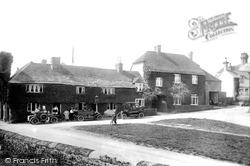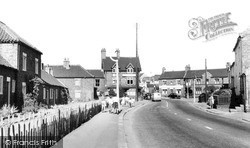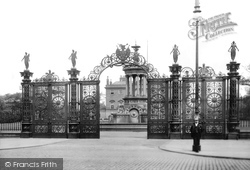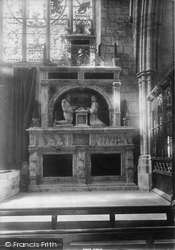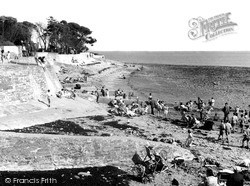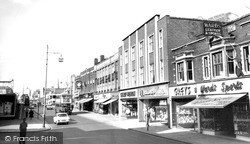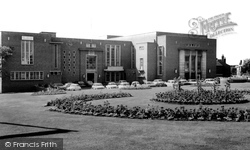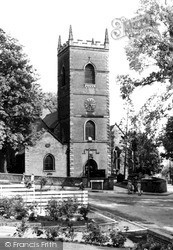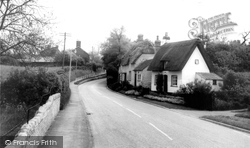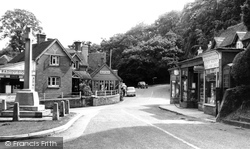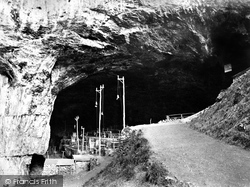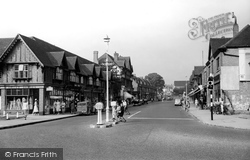Places
18 places found.
Those places high-lighted have photos. All locations may have maps, books and memories.
- Hythe, Kent
- Hythe, Hampshire
- Small Hythe, Kent
- Bablock Hythe, Oxfordshire
- Methwold Hythe, Norfolk
- Hythe, Somerset
- Hythe, Surrey
- Hythe End, Berkshire
- The Hythe, Essex
- Egham Hythe, Surrey
- West Hythe, Kent
- New Hythe, Kent
- Broad Street, Kent (near Hythe)
- Horn Street, Kent (near Hythe)
- Newbarn, Kent (near Hythe)
- Newington, Kent (near Hythe)
- Broad Street, Kent (near Hythe)
- Stone Hill, Kent (near Hythe)
Photos
360 photos found. Showing results 1,681 to 360.
Maps
101 maps found.
Books
10 books found. Showing results 2,017 to 10.
Memories
4,406 memories found. Showing results 841 to 850.
Royal Hotel Ww2 And Afterwards
From 1939 to 1959 I lived in West View, just a couple of hundred yards from the Royal. We were friendly with the proprietress of the time, a Miss Florence Shute. Miss Shute had a brother who lived in our flats and ...Read more
A memory of Ilkley in 1940 by
Statutory Swingin'
As a young lad in the “swingin 60’s”, the swingin’ rather passed me by … and no regrets there. But the word puts me in mind of the swinging we did do. Just down the lane from Allsopp’s garage – the hallowed source of ...Read more
A memory of Ashby-de-la-Zouch in 1969 by
My Young Life In Eve Road
My nan lived at 10 Forest Lane, Maryland Point. Some times I would stay with her and my Auntie Conny. When my nan had her coal delivered, the coalman would lift a cover up by the side of the front door, the coal was ...Read more
A memory of West Ham in 1950 by
Brothers And Sisters
My brother Christopher and I first went down to school at Visitation Convent, Bridport in September 1957. We lived in Ascot as our father had been an officer in the Royal Horse Guards and had been based at Windsor. We took a ...Read more
A memory of Bridport by
Metal Bridge My Grandfather Harry Holmes My Childhood
Harry was born at spennymoor 1877, he moved to metal bridge in 1898 when he married Elizabeth Joyce born 1878 from Easthowle.They were married at St Lukes church, Ferryhill by vicar Lomax, ...Read more
A memory of Metal Bridge by
Great Niece Of Joseph Henry Lachlan White
My great uncle's home. I had heard about Bredfield House all my life because it belonged to my great uncle, Joseph Henry Lachlan White. I only saw it in 1960, however, long after it had been demolished ...Read more
A memory of Bredfield in 1960 by
St Marys Home
My memories of the home, which was run by the Southwark Catholic Rescue Society. The sisters of charity looked after us, I was taken there just before my 10th birthday in april 1947 along with brothers Bill 13 and Bob 4. My early ...Read more
A memory of Gravesend in 1947 by
Brook Side
I lived by the brook as a child and spent time catching sticklebacks which I then brought in to watch TV! The brook used to regularly flood the cottages at ground floor level. But recall many happy times in the village and at the village school.
A memory of Rolleston on Dove
Christmases And Wwii Years In Skelmanthorpe
I was born in Leeds Yorkshire, but my maternal grandmother and other relatives lived in Skelmanthorpe. My earliest memories are of being the first grandchild and visiting grandma every Christmas to ...Read more
A memory of Skelmanthorpe in 1930 by
St. Oswalds Girls School
I came to Alllerwash Hall, Fourstones, when it was a private girls' boarding school called St.Oswalds. The Second World War had ended that summer and my mother had died just before Xmas that year, I was eleven. I had had a ...Read more
A memory of Allerwash in 1945 by
Captions
4,899 captions found. Showing results 2,017 to 2,040.
By the 18th century, Ormskirk was already an important agricultural and market town, but with the arrival of the railway in 1849 it rapidly developed as an attractive residential area for Liverpool's prosperous
There is no hint of that industry, though, in this timeless picture, where children play by the waterside.
The point from which this photograph was taken, Seed Hill, was at that time in Yorkshire, but looks over the border, defined here by the Hodder, across a corner of Lancashire.
However, harassed by rioting Luddites who saw their livelihoods threatened by the new machinery, he moved to Nottingham in 1768 as did Arkwright of Preston.
It was formed by the Arkle Beck, which rises high on Sleightholme Moor and passes through some lovely hamlets such as Arkle Town, Whaw and Langthwaite, where The Red Lion (centre) is a welcome hostelry
Little of the Roman town or medieval city remains, as Chichester was almost entirely rebuilt by the end of the 18th century.
This church was completely rebuilt after an earlier church on the site burnt down in 1377 along with most of Rye during an attack by the French.
By the early 1900s it was described as 'a venerable and rambling building' popular with cyclists, motor car enthusiasts and particularly artists, many of whom decorated the Swan's little parlour with their
The stucco Royal Hotel at the right, on Cornfield Road corner, was replaced by the present NatWest bank in about 1930.
It was sacrificed in a road-widening scheme, and replaced by the Fountain public house, which was set back in line with the ancient row of almshouses we see here on the left.
Originally designed by the Coalbrookdale Iron Company for Sandringham House, and shown at the International Exhibition of 1862, they were adapted by replacing the central Prince of Wales' feathers with
The tree-lined walks by the side of the River Derwent known as the Lovers' Walks have been popular with visitors since the town became a tourist honeypot in the 19th century.
By the 1950s, visitors to the beach were mainly from the numerous caravan sites in the area. Flat Holm and Steep Holm islands are in the background.
By the 1960s the needs of a new generation of consumers had to be met.
This picture was taken at about the time when Lower Neatham Mill (pictured here) was sold by the Denyers to the Ellis family of Headley Mill. They continued to produce 100% wholemeal flour.
It is a large church which can seat over 400 people; it is built on land given by the nuns of the Priory of Our Lady of Good Counsel. It was completed by 1930.
The Phoenix fire engine was owned by the town's Phoenix Fire-Office and maintained, as agents, by Joseph and later William Henry, to protect property insured with the Phoenix.
Only the left-hand wing of the building is occupied by the police, while the right-hand wing is the Civic Hall. The photograph perhaps gives the impression of intimidating size and spacious grounds.
The churchyard contains part of a Saxon preaching cross, found buried by the church in 1910. It is said to have been erected by Lady Godiva, whose son Aelfgar owned Upper Penn.
The hall itself, an Elizabethan mansion, was built on the site of a former castle built by the Sheriff of Cambridgeshire after the Norman conquest.
By the time this photograph was taken, approximately one hundred years later, it was firmly on the tourist trail.
Clearly visible are the wooden, gibbet-like frames used by the rope makers who made their home inside the cave entrance for hundreds of years. This was the famed 'village which never saw the sun'.
This one was known as Andover Town - we can just see the sign on the right, by the post box. This station has gone, and now there is just one to serve the town.
This photograph clearly shows the pleasing symmetry and scale of the sensitive development carried out by the Onyx Property Investment Company at the centre of the village over the preceding decades.
Places (18)
Photos (360)
Memories (4406)
Books (10)
Maps (101)



